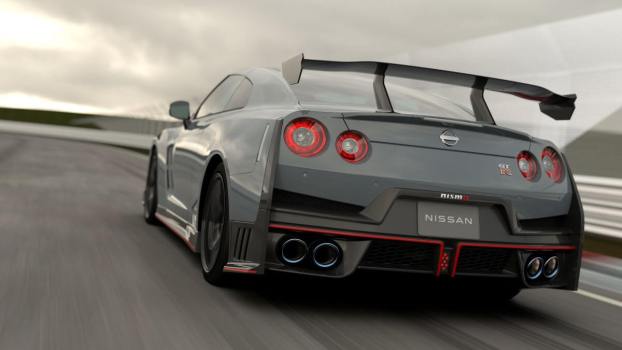
The 2024 Nissan GT-R Has 3 Iffy Advantages Over the Chevy Corvette Stingray
The Nissan GT-R and Chevy Corvette Stingray are superlative performance sports cars. With superb acceleration and high-G handling, each has track-ready dynamics. However, they go about it in different ways.
While the GT-R uses a high-tech twin-turbo V6 and sophisticated AWD, the ‘Vette uses an old-school pushrod V-8 routed through the rear wheels. The Nissan’s got turbo whine and off-the-line stick, while the Chevy has classic V8 roar and spins the tires with ease. Either one is a thrilling ride.
However, the Nissan GT-R only has three iffy advantages over the Chevy Corvette that might matter to some enthusiasts and could be of no concern to others. Let’s go through them one by one.
1. All-wheel drive traction
The Nissan GT-R’s turbo 3.8-liter inline-six produces 565 hp and 467 lb-ft of torque. The Chevrolet Corvette’s NA 6.2-liter V8 makes 490 hp and 465 lb-ft of torque. Those are superb stats for street-legal vehicles. However, with its advanced ATTESA ET-S all-wheel drive, the Nissan puts power to the ground like nothing else.
Key to the ATTESA ET-S system is an electronic variation of the front/rear torque split. That lets the GT-R adjust settings depending on the situation, whether leaping away from a standstill or hitting the apex of a corner.
For optimal stick during 0–60 mph sprints, an even 50/50 torque split ensures every wheel has bite. But during high-speed cornering, sending more torque rearward frees up the front wheels for enhanced turn-in. As DSport Mag describes, the ATESSA system takes the cake against more conventional AWD setups.
On the other hand, AWD isn’t typically at the top of the list for sports car buyers. Many world-class performers — like the Ferrari 296 GTB and Porsche 911 Carrera — use conventional RWD to good effect. Some prefer the effortless turn-in and steering response of freed-up front wheels.
2. Seating for 4
Admit it. When you watch a sweet sports car drive by, you’re not worried about its seating capacity. What you notice first are the sinewy bodywork and intoxicating engine notes. And you’re not alone. Still, for drivers wanting a little more practicality, the Nissan GT-R’s rear seats could make a difference.
Having extra seating lets drivers share the thrill of the GT-R’s capabilities or do their part in carpooling to an event. Pet owners can also stow their furry friends in the back seat or toss in bags of groceries while on the go.
3. More standard horsepower and torque
The Nissan GT-R bests the Chevy Corvette by 75 hp and 2 lb-ft of torque. While there’s no denying the turbo inline-six’s power advantage, it might not be too noticeable on the street. That’s because, at such astronomical power levels, the line gets blurred in perceptible benefits.
Instead of outright power figures, the character of each engine could spell the difference for prospective buyers. The deep burble and grunt of an American V8 is like nothing else, and as it climbs toward the redline, it sounds more stock car than street vehicle. On the other hand, some may prefer hearing the GT-R’s twin turbos spool up, feel the boost kick in, and all four tires grab at the pavement.
Chevy Corvette Stingray advantages over the Nissan GT-R
While the Nissan GT-R has its advantages, so does the Chevy Corvette Stingray.
First off is the ‘Vette’s dramatically lower MSRP. At $66,300, the Stingray offers astounding performance and style for the price. At the same time, the GT-R’s $120,990 sticker price is more akin to upscale European sports cars like the $116,050 Porsche 911.
Not only that, but the Corvette boasts solid fuel economy for such a powerful vehicle. According to Edmunds, the Stingray obtains a 16/24/19 city/highway/combined mpg rating. The GT-R lags behind with a 16/22/18 city/highway/combined mpg rating.
Additionally, due to the Chevy Corvette’s mid-mounted engine, it has trunks front and rear. That adds up to around 13 cubic feet, besting the GT-R trunk’s 8.8 measurement.
While the Nissan GT-R has a few advantages over the Chevy Corvette, they probably don’t matter much to the typical sports car buyer. However, for enthusiasts who value traction, tech, and practicality, the GT-R may be the better pick. On the other hand, the ‘Vette has high points of its own, like a far lower MSRP, good highway fuel economy, and convenient storage space.




